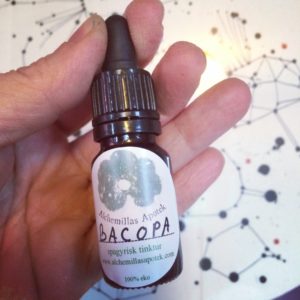
Bacopa
Aka “Stronger Brahmi”, “Water Hyssop”, “the divine great drug”, “Herb of Grace”
![]()
Brahmi is a nootropic herb and its uses in neurological and psychiatric disorders are well recognized. Bacopa is a nerve tissue builder and cardio-tonic, it relieves stress, aids respiratory tract problems such as asthma, bronchitis, cough but foremost it is used for nervous exhaustion, to improve memory and as a “brain-food”.
![]()
Bacopa increases comprehension, concentration and recollection. In India it is used for ADHD. It gives focus to scattered minds. It gives overview instead of millions of separated details, it makes you see the patterns.
![]()
The ancient Ayurvedic sages, who were also great physicians, revealed Brahmi’s role in promoting Medhya (intellect), Ayushya (longevity), Rasayana (rejuvenation), Prajnasaktivardhana (intellectual power), Hrdaya (Heart), Majjadhaty Rasayana (nervous system rejuvenation), Balya (strength, especially mind), Jivaniya (life energy), Nidrajanana (sleep), Dhana (wealth), Svara (voice), Varna (complexion) and Anuloma (redirecting the flow of vata downwards).
It is not for nothing Bacopa is referred to as The Divine Drug.
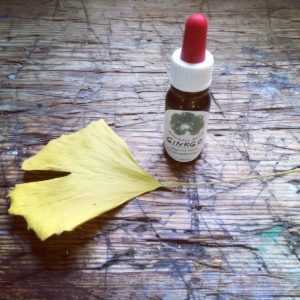
Ginkgo
Ginkgo have lived for 300 million years on our earth.
![]()
The leaves of the Ginkgo tree contain different active substances at different stages, so I harvest thrice. Ginkgo improves circulation, it supports the heart and improves blood flow in tissues and organs, which protects cells against damage by oxidation by free radicals.
Ginkgo is thus an antioxidant and improves absorption of nutrients, providing vital oxygen supply to each cell. It aids vision and hearing-related problems due to these properties. It is also these characteristics that support memory. It is a brain-tonic.
![]()
Ginkgo is good against fatigue, gives energy and is good for depression by the particular phytochemicals it contains. Ginkgo is one of the nootropic plants that improve mental functions such as cognition, intelligence, motivation, memory and concentration.
![]()
Something interesting with the leaves of Ginkgo is that they look a bit like the two halves of the brain. Nature communicates with us via the doctrine of signatures, the signs of nature.
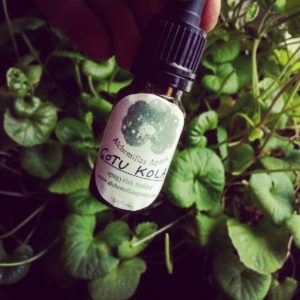
Gotu Kola
The herb of the yogi
“Yoga exists in the world because everything is linked.” – Desikashar
![]()
Gotu Kola is anti-inflammatory and a circulatory stimulant. It is also an excellent connective tissue tonic, aiding with arthritis, ulcers, skin problems, strengthening hair, skin and nails. Connective tissues connect all things in the body – muscles to bones, holding organs in place, and giving the body its mobile structure.
![]()
It is used by many yogis to enter a state of non-dual awareness and deepen their meditation. It promotes a very high level of clarity not of mind, but of awareness of the mind – which in turn clarifies the thought processes. Gotu Kola helps to increase circulation to the brain, balance its hemispheres, improve memory, intelligence, and calms the mind. It is a rejuvenative tonic for the nerves, brain cells, and the adrenal glands.
Gotu Kola is very much connected to the crown chakra. It is an adaptogen and a brain-tonic.
![]()
The connection between the crown and connective tissue is that this herb helps us to understand the unity of all things, how everything in our body is interconnected, and how everything in the universe is interconnected too.
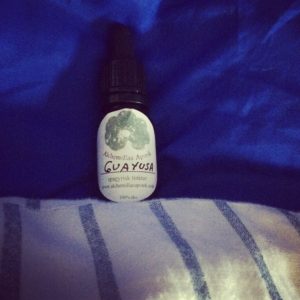
Guayusa
Amazonian dream teacher.
![]()
Guayusa is a cousin plant to Yerba Mate, and elicits similar benefits including natural caffeine that energizes without the resultant jitters or crash associated with other caffeinated drinks like coffee. Guayusa is full of antioxidants, more so than in green tea. Guayusa aids in digestion and boosts metabolism.
![]()
Guayusa, or “Wayusa,” is known within the Kichwa community to awaken the spirit, bring peace to the body, and stimulate the mind. It will also induce vivid and lucid dreaming if you drink it at night. Legend has it, that the Kichwa tribe prayed for a plant that could help them connect to the dream world. When they awoke in the morning, there was a guayusa plant in front of them.
![]()
The Spirit of Guayusa is an amazing teacher! I decided to turn these magical leaves into a spagyric tincture, extracting in a strong decoction from snow and maceration in 40% alcohol and it turned out very well! I transformed the snow when the new moon was in pisces into a strong Guayusa tea to help us integrate the teachings of our dreams.
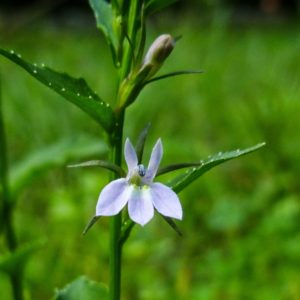
Lobelia
It is hard to understand addiction unless you have experienced it yourself. – Ken Hensley
![]()
Lobelia is also called “Indian tobacco” and has a long history of use as an herbal remedy for respiratory conditions such as asthma, bronchitis, pneumonia, and cough. Historically, Native Americans smoked lobelia as a treatment for asthma. In the 19th century, American physicians prescribed lobelia to induce vomiting in order remove toxins from the body. Because of this, it earned the name “puke weed.” It is a purgatory, it means that it makes you vomit if taken in larger doses.
![]()
Lobelia impacts neurotransmitter activity in a way that is similar to nicotine. The active ingredient, Lobeline, is a both a nicotine agonist and antagonist derived from an Indian plant “lobelia inflata.” Here's what that means:
The brain has neurotransmitter receptor cells that have been labeled 'nicotinic' receptors because they are stimulated by nicotine. Lobeline acts on these cells as an 'agonist,' which means that it binds to these cells and stimulates them in a similar way to nicotine. (The effects are not as strong as nicotine, however.) Because the drug is in effect 'parked' at the receptor sites on these cells, it also partially blocks nicotine from activating them, thereby reducing the effect of nicotine in the brain from smoking, and helping to reduce the 'reward' associated with smoking.
Interestingly, unlike nicotine, which is highly addictive, lobeline does not appear to be addictive. This may be because of its structural differences from nicotine, and the different ways that it affects dopamine storage and release. (Dopamine is another a neurotransmitter – one that is implicated in addictive patterns of behavior.)
Rather than stimulating the release of dopamine in the normal way (from the presynaptic terminal), lobeline appears to induce the metabolism of dopamine intraneuronally as well as inhibit dopamine re-uptake. The result of this is that rather than getting a 'dose' of rewarding dopamine immediately connected to the behavior of smoking (or of taking lobeline), the dopamine effect is more diffuse. So you still get the pleasant dopamine effect, but because it is not strongly associated with the behavior, it does not induce addictive behaviors, and in fact partially blocks the addictive effect of nicotine intake.
Dwoskin LP, Crooks PA., (2002) A novel mechanism of action and potential use for lobeline as a treatment for psychostimulant abuse. Biochemical Pharmacology. Jan 15;63(2):89-98.
![]()
I made a formula to help people stop smoking or using snuff which is common in Sweden. So far this formula have helped around 12 people in quitting, myself included!
I recomend smokers or snuffers who wish to quit my formula rather than the pure Lobelia spagyric tincture because it has calming and adaptogenic herbs in it that helps the quitter cope with stress.
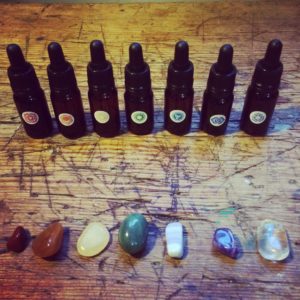
7 Chakras
This is a series of spagyric formulas dedicated to the 7 chakras.
The seven chakras are the centers through which energy flows in our bodies. The chakras can be described as spinning wheels of light. In sanskrit chakra means circle, symbolising the endless rotation of shakti.
The spagyric formulas created for each chakra can be used in many different ways.
Create your own practice and rituals.
Perhaps chant the mantra or seed-sound corresponding to each chakra, visualize the color or yantra, do yoga connected to each chakra or just connect with the chakra within.
There may be a few chakras needing extra attention and strengthening and one decides to work with those for a while.
There is much information on the word wide web if you need to research. A good book is “Wheels of Life” by Anodea Judith. I write a few keywords to each chakra-elixir, starting from the root and ending at the crown.
All chakras at a special price 700 kr + shipping.
Otherwise 150 kr each, please specify which ones you want to order.
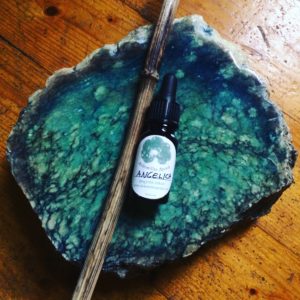
Angelica
As above – So below
![]()
Angelica is bitter, warming and aromatic.
It can be useful in treatment of swellings, inflammations and glandular indurations, particularly of the head and neck region. Good for circulation, for cold hands and feet. Used for fever.
It is good for anguish, spasms, nervous excitation and fatigue; calms excess in both the sympathetic and parasympathetic branches of the autonomic nervous system. It is good for PMS and excessive bleeding while menstruating.
Can be used for for arthritis and gout. Good for the liver, increases digestion and metabolism of oil and production of bile, hence increases digestion and nutrition. It relaxes the throat and makes it easier to take long deep breaths. It simultaneously opens the imagination and the mind when prana (life force through breath) can flow.
![]()
Angelica is an important Shamanic plant among the Saami people of the North.
In Native American herbalism it is referred to as a “Bear Medicine”. Just as the bear goes into hibernation through the winter, bear medicine usually relax the mind, open the imagination and bring people into dreamtime. Angelica certainly has this capacity.
Bears eats these roots upon awakening in spring to wake up, clear their throat and start rebuilding their mass.
![]()
I see Angelica as an embodiment of the Alchemical device “As above so below”.
The deep aromatic root and the umbrella-like flower full of starlike seeds are connected through a hollow stem, a channel connecting the heaven and the earth. This is one of the effects the Spagyric Tincture may have upon you – making you feel like this channel.
Angelica connects you with your guardian angel, or if you prefer to call it your higher self.
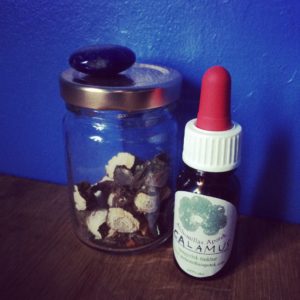
Calamus
The power to speak
![]()
Calamus root is aromatic and bitter. It is used for throat colds, sore throats, irritable coughs, laryngitis, chest colds, and head colds. It is considered an effective antihistamine; clearing stuffy sinuses and helping to dispel mucous. It is good when you've lost your voice and for singers or people who work with the voice.
It is also good for libido in both sexes. It also has a reputation in Ayurveda for benefitting conditions in the aging prostate. According to herbalist Henriette Kress “Calamus is astonishing for the pain from endometriosis. One of the few herbs we have for that; cherish it…”
![]()
Calamus also excels as a relaxant, despite its stimulating properties. “Stimulant” and “relaxant” shouldn't be seen a contradictory (uses occupying opposite ends of a polarity): stimulating herbs increase the expression of the vital force, while relaxants ease the resistance to that expression. They work together in a complimentary fashion to achieve the same end: better flow of energy and vitality.
Calamus can be incredibly effective in treating anxiety and is especially helpful in finding one’s voice and expression.
![]()
Calamus promotes circulation to the brain, sharpens memory, enhances awareness, and increases communication. The yogic name, Vacha, means “speech” and refers to its action on the fifth chakra and its propensity to help you speak from your highest consciousness.
Clarity, centering, perspective. Expressing one's truth. This is what the teachings of Calamus is about.
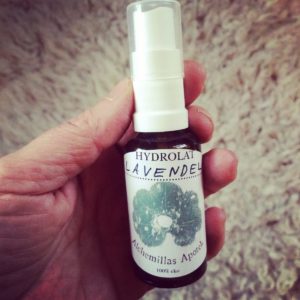
Hydrosol of Lavandula Angustifolia
Floral and sweet with notes of honey and deeper basenotes
A soothing balm for the body, mind and soul.
Use as a mist, balancing for all skintypes even the baby's.
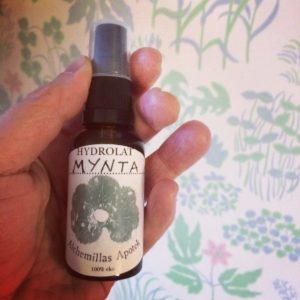
Hydrosol of Mentha Piperita
Spicy yet cooling and refreshing scent.
Peppermint awakens the mind! Drink it in the morning to awaken the body, including the colon.
Spray on the face and body during external or internal (menopause) heatwaves.
Peppermint is phenomenal for concentration, when studying or writing. It cools the nerves but stimulates the mind. Spray a cloud and walk through it before important meetings or work with clients to be alert and present.
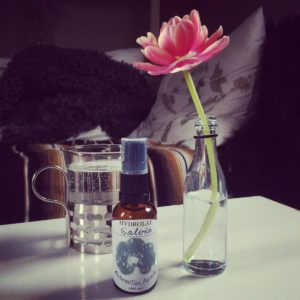
Hydrosol Of Salvia Officinalis
Pure, fragrant, herbaceous and uplifting aroma
- Sage hydrosol can be used to purify a space, persons or objects when burning insence is not permitted.
- As a mist it may be used as a circulatory stimulant.
- Sage helps balance the hormones and autonomic nervous system and may be helpful in easing the symptoms of menopause, PMS and menstrual cramps as a mist and taken internally diluted in warm water.
- When Sage hydrosol is applied at the onset of swollen lymph nodes, it can help reduce the swelling.
- It can be used for a sore throat, diluted in warm water or sprayed in the throat.
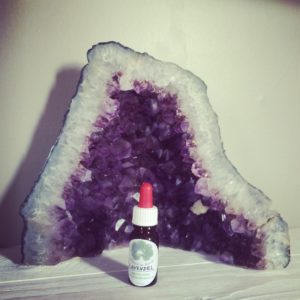
Lavender
Balsam for the soul
![]() Cooling, stimulating, relaxing. Good for cramps and tension both mentally and physically, muscle aches, migraines. Lavender has the action of concentrating the blood and blood sugar for the liver to nourish and strengthen it. Good for motion sickness, dizziness, fainting. Good for people who are so tired that they can not keep their head up. Migraine after a long week or a long day and for working with details.
Cooling, stimulating, relaxing. Good for cramps and tension both mentally and physically, muscle aches, migraines. Lavender has the action of concentrating the blood and blood sugar for the liver to nourish and strengthen it. Good for motion sickness, dizziness, fainting. Good for people who are so tired that they can not keep their head up. Migraine after a long week or a long day and for working with details.
![]() It is good to take in the evening to wind down when the mind is overly active. The prabhava (special potency) of lavender is that it works just as well the other way, it wakes up the sleepy minds.
It is good to take in the evening to wind down when the mind is overly active. The prabhava (special potency) of lavender is that it works just as well the other way, it wakes up the sleepy minds.
Lavender is good for the people who have high demands on themselves and others. This type is often very driven, overworked and tense, resulting in fatigue, aches and tension in the neck, shoulders and headaches. (use together with vervain)
Good for people who get stuck in the details, finicky.
Good for the type of depression and anxiety that often combines with Irritable bowel syndrome.
![]() Rudolf Steiner writes that Lavender is indicated for spiritual states where the astral body is holding on to the physical body and keeps it in a too tight grip which results in cramping and straining on the nerves. Another explanation is that the autonomic nervous system takes over when the unconscious is not able to handle or process experiences. In any case, lavender works as a balm for the soul. It opens the mind so that some of it can take off and fly out. If the mind is holding on to an excessive content, to vast to understand, this creates tension. It is good in OCD, obsessive thoughts and behaviors. (Even better in combination with passion flower)
Rudolf Steiner writes that Lavender is indicated for spiritual states where the astral body is holding on to the physical body and keeps it in a too tight grip which results in cramping and straining on the nerves. Another explanation is that the autonomic nervous system takes over when the unconscious is not able to handle or process experiences. In any case, lavender works as a balm for the soul. It opens the mind so that some of it can take off and fly out. If the mind is holding on to an excessive content, to vast to understand, this creates tension. It is good in OCD, obsessive thoughts and behaviors. (Even better in combination with passion flower)
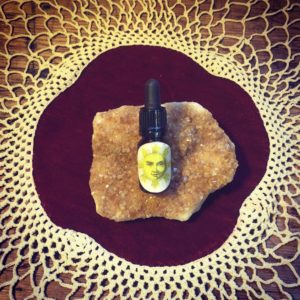
Light in the Dark
“In the happy night,
In secret, when none saw me,
Nor I beheld aught,
Without light or guide,
save that which burned in my heart”
– The Dark Night of the Soul by St. John of the Cross
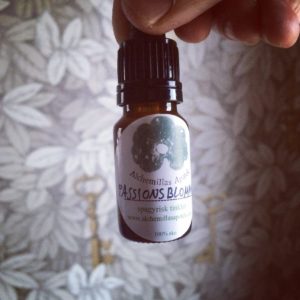
Passionflower
“I remember him with a dark passionflower in his hand, looking at it as no one has ever looked at such a flower, though they might look from the twilight of day until the twilight of night, for a whole life long.” – Jorge Luis Borges
![]()
Passion flower is helpful in case of anxiety, insomnia and repetitive, compulsive thoughts.
![]()
The Spagyrisist and Alchemist talk of the Signature of a plant, Signs of Nature. Nature communicates with us through signs, colors, shapes etcetera.
Purple and white coloration often has to do with the nervous system and the crownchakra.
Another signature is the spiraling little tendrils . Passionflower is excellent to help the mind from going in loops. Very good for people that lie awake thinking in loops, unable to mellow down enough to relax and fall asleep.
![]()
This spiraling signature can also be connected to the planet Uranus who travels in a spiraling orbit . The sign Aquarius is ruled by this Planet that emanates a truly electrical energy.
An overly busy mind can lead to tension and anxiety if it spirals out of control.
Passionflower is your friend if you have these tendencies, to enable you to move down into intuition, into the body if you are too much up in the mind for your own good.
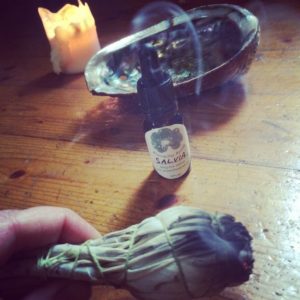
Sage
Sage is for the practicing mystic – I walk my talk
![]()
Sage is used for irritations and inflammations of the throat and respiratory system. Sage has an action on the liver, gallbladder and the digestive system and helps the liver to break down fat. Regulates sweating.
![]()
Purification of the self and purity in communication. Support in delivering our messages. Sage reconnects us to who we are and helps us to recognise wisdom in everything. How each reflection of life is a reflection of our own nature, as we hold the whole universe within our own being.
![]()
Sage helps with integration of the spiritual and the physical worlds together, dissolving the boundary between the mundane and the sacred, helping to bring knowledge into the heart where it can transform into wisdom. Sage is a wise plant teacher of many secrets.
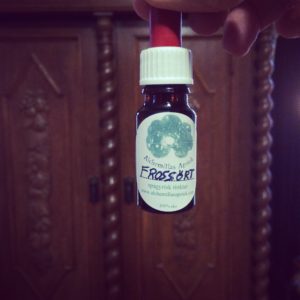
Skullcap
Skullcap makes you feel like you have a helmet on your head that calms and protects you.
![]()
A supreme nerve remedy with great sedative powers. Cooling, relaxant and calming to the nerves. Skullcap is also good for tense headaches.
![]()
Scutella means shield in latin. Skullcap is a comforting herb, traditionally used to alleviate nervous tension and exhaustion. It is used to promote emotional wellbeing and relaxation during times of occasional distress.
![]()
Skullcap is called for when you have a sense your soul is not completely settled into your body. This may have been caused by stress, shock or trauma.
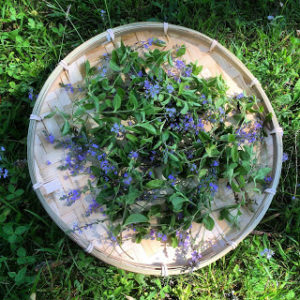
Speedwell
“I am most glad I loved thee—think of all
The suns that go to make one speedwell blue! – Oscar Wilde
![]()
Speedwell was highly regarded as THE herb for a speedy recovery in the times of the roman empire. It has since a hundred years ago been sort of forgotten in the world of healing.
It is primarly used for respiratory troubles, cough. It is an expectorant , it dispells mucus. Speedwell is also healing for ulcers, it enhances the regeneration of the gastric mucosa. It was famous for healing the lungs as well, and research is going on on this topic.
![]()
Maria Treben recommends it for nervousness caused by mental exhaustion. In my opinion it is grounding and brings a lightness at the same time, your chakras seem to align themselves from the bottom to the top. It contains the glycoside, scutellarin, named after our calming friend, Skullcap.
I have both Skullcap and Speedwell in my Stop Smoking Support.
![]()
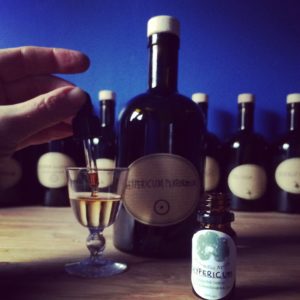
St John´s Wort
Prepared on the Solar Return of St John the Baptist the 24th of june.
![]()
St John´s wort is used for melancholia, seasonal affective disorder (SAD) and is also good for mental burnout.
It is a stomach normalizer applicable in both hyperacidity and hypoacidity. When the gut is in balance – intuitions are stronger.
![]()
St John´s wort lights up the solar plexus chakra, the inner sun. The signature of this flower is also indicating this, the yellow color and it´s rays of light-looking little antennas in the centre of the flower. It gives a centered energy, joy, focus and has a powerful effect on the nervous system. It strengthens the animal instinct in the gut, to trust the intuition.
![]()
The petals are dotted with little perforations. This indicates another one of Hypericum Perforatum´s properties: It is used for leaky energy. When energy is leaking from us, it becomes easier to pick up on the energy of others, making us feel tired and drained. This magical plant fills up these energetic holes and centers us so our energy stays within us and we no longer pick up on unwanted vibes or fall under the domination of untoward people.
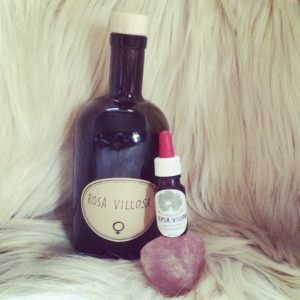
Wild Rose
The secret of the heart
![]()
The medicine of the Rose is healing to the emotional heart as well as a remedy for the physical circulatory system. It is a cardio-tonic, cooling and astringent.
![]()
Rose is also a brain-tonic known to be a medhya in Ayurveda, that is, it enhances dhi dritti smriti. These are the three primary functions of the brain for the actions of registering, storing and recalling knowledge and information. When they are operating in a balanced and coordinated manner, the brain is in a stress-free state of bliss.
Rose is a support when processing strong feelings and good when making important decisions.
![]()
First and foremost, Rose is a healer for the heart. It evokes beauty, openness and gentleness. To walk in beauty. The rose opens the heart chakra and her teaching is to love ourselves.
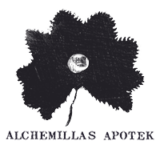
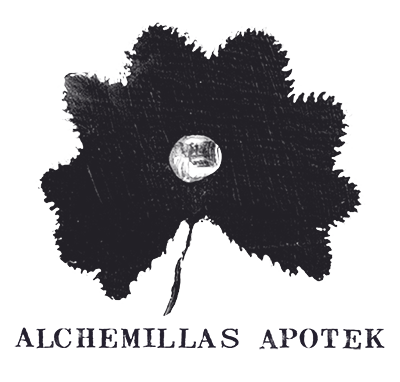

 English
English Svenska
Svenska